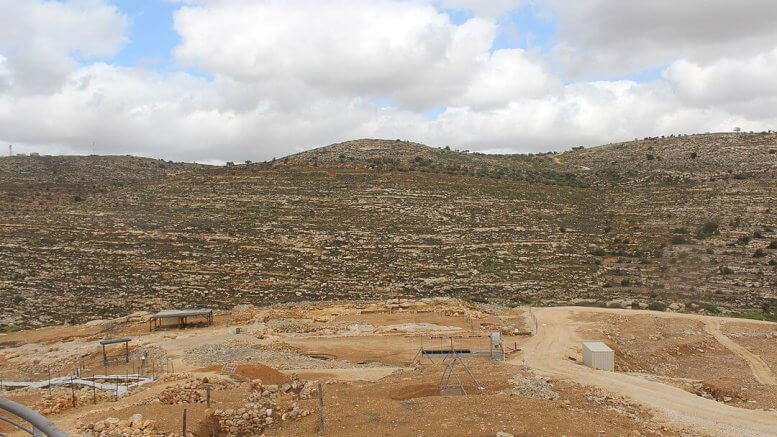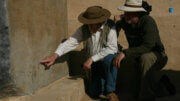Playback speed:
In our coverage of biblical archaeology, we explore recent archaeological discoveries that bolster the historical authenticity of biblical narratives. In this post, we delve into Artifacts at Shiloh and their connection to the Tabernacle, uncovering their significance and providing insights into the ancient world as described in the Bible. Stay tuned as we continue to bridge the past with the present, revealing the rich history that supports our faith.
Introduction
Recent archaeological excavations at Shiloh have uncovered remarkable artifacts that shed light on the site’s historical significance and connection to the Biblical Tabernacle. These discoveries provide invaluable insights into ancient Israel’s religious and cultural practices. This post delves into the findings at Shiloh, exploring their historical and Biblical significance.
LATEST FROM SHILOH’S DIG
The Discovery Shiloh, located in the heart of ancient Israel, served as the religious center for the Israelites for centuries. Archaeologists, led by Dr. Scott Stripling, have unearthed artifacts such as small ceramic pomegranates, which are significant in Biblical tradition, symbolizing fruitfulness and blessing. These finds and other artifacts prove the site’s connection to the Tabernacle (The Times of Israel) (Bible Archaeology Society).
Historical Context: The Tabernacle at Shiloh
The Bible records that the Tabernacle, a portable dwelling place for the Divine Presence, was set up at Shiloh after the Israelites entered the Promised Land. This site served as the central place of worship for Israel until the establishment of Jerusalem as the religious capital. The story of Samuel and the Ark of the Covenant (1 Samuel 4:12) highlights Shiloh’s significance.
Biblical Account and Significance of Pomegranates
Pomegranates were an important symbol in ancient Israel, used in decorating the Tabernacle and later the Temple. The discovery of ceramic pomegranates at Shiloh suggests a direct connection to the religious practices described in the Bible. These artifacts offer tangible evidence supporting the Biblical account of the Tabernacle’s presence at Shiloh.
Archaeological Techniques and Methods
Dr. Stripling’s team employed advanced techniques such as residue analysis on pottery sherds and wet sifting, which recovers smaller artifacts missed in earlier excavations. These techniques have led to the discovery of numerous coins, clay sealings, and other artifacts, providing a clearer picture of daily life in ancient Shiloh.
Key Objectives of the Shiloh Excavation
The Shiloh Excavation is one of ABR’s most important research projects, with several core goals:
- Investigate the location of the Biblical Tabernacle and any associated structures.
- Uncover evidence of the Biblical sacrificial system.
- Understand daily life in Israel during the Conquest and the period of the Judges.
- Introduce new technologies like wet-sifting and computerization in the field.
- Equip students and volunteers with the knowledge and skills needed for scientific excavation in the Land of the Bible.
- Build on the regional understanding of life in the Highlands of Israel gained by ABR’s previous excavations at Khirbet Nisya and Khirbet el-Maqatir.
Implications for Biblical Scholarship
The artifacts uncovered at Shiloh provide a deeper understanding of the Israelites’ cultural and religious practices during the time of the Tabernacle. This discovery highlights Shiloh’s significance as a central place of worship and offers insights into the historical context of biblical narratives.
Conclusion The ongoing excavations at Shiloh reveal this ancient site’s rich history and its significant role in Biblical narratives. The artifacts discovered provide a deeper appreciation of the historical and spiritual significance of the Biblical accounts, bridging the past with the present in our continuous quest for understanding.
Further Reading For more detailed information on the discoveries at Shiloh and their implications, check out the articles from Times of Israel and Biblical Archaeology Society. More detailed reports can be found at Associates for Biblical Research – Shiloh Excavations.
References
- Times of Israel. (2024). At Shiloh, Archaeologist Finds Artifacts Hinting at Biblical Tabernacle. Link to article
- Biblical Archaeology Society. (2024). Recent Discoveries in Biblical Archaeology. Link to article
- Associates for Biblical Research. (2024). Shiloh Excavations. Link to site
By exploring these archaeological findings, we gain a deeper appreciation of the historical and spiritual significance of the Biblical accounts, bridging the past with the present in our continuous quest for understanding.
Further Reading:
- Armstrong Institute: Uncovering the Bible’s Buried Cities: Shiloh
- Patterns of Evidence:
Shiloh Discovery Matches Biblical Altar
Biblical Tabernacle: New Dig Seeking Evidence to Confirm Location





